Hola una vez más.
Hi again.
Hi again.
En el siguiente enlace podéis ver nuestros próximos viajes fotográficos y de observación de aves y mamíferos nacionales y al extranjero. Espero que os gusten y os animéis a venir conmigo. Una experiencia que nunca olvidareis.
In the following link you can see our next national and foreign Birds and Mammals photographic and observation trips. I hope you like them and I encourage you to come with me. An experience that you will not forget.
Esta vez, os muestro lo que pude fotografiar en el viaje programado a Granada y Almería del 15 al 16 de abril.
This time I show you what I was able to photograph on the scheduled trip to Granada and Almería from April 15 to 16.
El tiempo fue bueno aunque el domingo 16 hizo mucho viento por la mañana, hasta 25 km/hora.
The weather was good, although on Sunday the 16th it was very windy in the morning, up to 25 km/hour.
The weather was good, although on Sunday the 16th it was very windy in the morning, up to 25 km/hour.
Sábado 15 de abril:
Saturday April 15:
Saturday April 15:
Llegamos a la entrada de la salina vieja en Santa Pola a las 2 de la tarde.
We arrived at the entrance of the Old Saline in Santa Pola at 2 pm.
Lo primero que vimos fue a una pareja de cercetas pardillas (Marmaronetta
angustirostris).
The first thing we saw was a pair of Marbled Teals.
Vimos bastantes ejemplares si se tiene en cuenta que es un ave muy escasa.
We saw quite a few specimens if one takes into account that it is a very scarce Duck.
También vimos algunas lavanderas boyeras (Motacilla
flava).
We also spoted some Yellow
Wagtail.
Me llamó la atención este cartel. Me pareció muy ingenioso.
This banner caught my eye. I thought it was very ingenious.
Había bastantes canasteras comunes (Glareola
pratincola).
There were quite a few Collared
Pratincole.
Me gustan mucho estas aves.
I really like these Birds.
Continuamos nuestro recorrido por las salinas de Cerrillos. En la foto una pareja de pato colorado (Netta
rufina).
We continue our tour of the Cerrillos Saline. In the photo a Red-crested
Pochard pair.
Macho de porrón europeo (Aythya
ferina).
Common
Pochard male.
Había un grupo de tarros blancos (Tadorna
tadorna).
There was a flock of Common Shelduck.
Los tarros blancos (Tadorna
tadorna) en vuelo y al fondo Sierra Nevada.
Common Shelduck in flight and in the background Sierra Nevada.
Vimos muchos flamencos comunes (Phoenicopterus
ruber).
We saw many Greater
Flamingo.
Archibebe común (Tringa
totanus).
Common
Redshank.
Una hembra de cigüeñuela común (Himantopus
himantopus).
A Black-winged
Stilt female.
Un bonito somormujo lavanco (Podiceps
cristatus).
A nice Great
Crested Grebe.
Las garcetas comunes (Egretta
garzetta) lucian su plumaje reproductor.
Little Egrets were in their breeding plumage.
Al igual que las gaviotas picofinas (Chroicocephalus
genei). Siempre me llama la atención que les cambie el color del pico.
Like the Slender-billed
Gull. It always strikes me that the color of their bills changes.
Un macho de chorlitejo patinegro (Charadrius
alexandrinus). Había bastantes.
A male Kentish Plover. There were quite a few.
Por último, nos fuimos hasta la Reserva Natural Concertada Charca de Suárez en Motril. Como las aves están en periodo reproductor, hay que concertar cita previa y pudimos acceder al recinto a las 6:30 pm. El objetivo principal de visitar este sitio era poder fotografiar a la focha moruna (Fulica
cristata). La visita era de una hora y media con un guía. Al ser entrada gratuita, el público que acudió a la visita no era muy pajarero y la visita fue bastante aburrida y muy poco tiempo en los observatorios. Una pena. En la imagen un macho de cernícalo vulgar (Falco
tinnunculus).
Finally, we went to the Charca de Suárez Concerted Nature Reserve in Motril. As Birds are in the reproductive period, you have to make an appointment and we were able to access the enclosure at 6:30 pm. The main objective of visiting this site was to be able to photograph the Red-knobbed
Coot. The visit lasted an hour and a half with a guide. Being free admission, the public that attended the visit was not very bird-watching and the visit was quite boring and very little time in the observatories. A pity. In the image a male Common Kestrel.
Solo nos dejaron visitar dos lagunas. En la primera vimos una pareja de calamones comunes (Porphyrio
porphyrio).
They only let us visit two lagoons. In the first we saw a pair of Purple Gallinule.
Hubo un momento de tensión al encontrarnos en uno de los caminos con un grupo de rallones que se habían separado de sus madres y es muy peligroso. Nos quedamos quietos hasta que las madres se reunieron con sus crías.
There was a moment of tension when we found ourselves on one of the paths a group of piglets that had been separated from their mothers and it is very dangerous. We stayed put until mothers were reunited with their youngs.
Vimos un bando de 7 garzas imperiales (Ardea purpurea) pero no llegaron a posare en las lagunas.
We saw a flock of 7 Purple Herons but they did not come to land in the lagoons.
En el segundo observatorio y último que nos pudimos parar 10 minutos, había un grupo de cigüeñuela común (Himantopus
himantopus). En la foto un macho. Fijaos que las plumas del dorso son negro azabache en los machos mientras que en las hembras, la foto de abajo, está matizado de pardo.
At the second and last observatory that we were able to stop for 10 minutes, there was a group of Black-winged Stilt. In the photo a male. Notice that the feathers on the back are jet black in the males while in the females, the photo below, it is shaded with brown.
Había varias garzas reales (Ardea
cinerea).
There were several Gray Herons.
Al igual que cormoranes grandes (Phalacrocorax
carbo).
As well as Great Cormorants.
Una gallineta común (Gallinula
chloropus).
A Moorhen.
Y por fin pudios fotografiar a la focha moruna (Fulica
cristata).
And finally you were able to photograph Red-knobbed
Coot.
Había bastantes garcetas comunes (Egretta
garzetta).
There were quite a few Little Egrets.
Había también una hembra de pato criollo (Cairina
moschata domestica).
There was also a female domestic Muscovy Duck.
Zampullín común (Tachybaptus
ruficollis).
Little
Grebe.
Un macho de ánade friso (Anas
strepera).
A Gadwall male.
Y varios porrones europeos (Aythya
ferina). En la foto un macho.
And several Common
Pochard. In the photo a male.
Domingo 16 de abril:
Sunday April 16:
El día amaneció despejado pero al acercarnos a la costa soplaba mucho viento.
The day dawned clear but as we approached the coast there was a lot of wind blowing.
Vimos varios alcatraces atlánticos (Morus
bassanus) de distintas edades. Este es un segundo año calendario.
We spoted several Northern
Gannet of various ages.This is a second calendar year.
Y este otro un adulto.
And this other one an adult.
Vencejo pálido (Apus
pallidus).
Pallid Swift.
Pagaza piconegra (Gelochelidon
nilotica).
Gull-billed
Tern.
Había muchas cogujadas montesinas (Galerida theklae).
There were many Thekla Lark.
En la rambla de Morales encontramos un grupo de malvasía cabeciblanca (Oxyura
leucocephala). En la foto un macho.
At Rambla de Morales we spoted a flock of White-headed Duck. In the photo a male.
Otro.
Another one.
Una hembra.
A female.
Protegiéndose de viento había garceta común (Egretta
garzetta), en el centro de la foto. A la derecha unas avocetas comunes (Recurvirostra
avosetta) y el resto son cigüeñuelas comunes (Himantopus
himantopus).
Sheltering from wind there was Little Egret, in the center of the photo. On the right, some Pied avocet and the rest are Black-winged
Stilt.
A la izquierda de la imagen una aguja colinegra (Limosa
limosa) y a la derecha dos machos de ánade azulón (Anas
platyrhynchos).
On the left of the image a Black-tailed Godwit and on the right two male Mallards.
Y un fumarel cariblanco (Chlidonias
hybridus).
And a Whiskered
Tern.
Después nos dedicamos a pasear por la los alrededores de las playas en busca de los camachuelo trompetero (Bucanetes
githagineus) y a las terreras marismeñas (Alaudala
rufescens). Con el primero no hubo suerte pero de las segundas vimos muchas. Igual fue debido al fuerte viento reinante.
Then we walk around the beaches in search of Trumpeter Finch and Lesser
Short-toed Lark. With the first one there was no luck but we saw many of the second ones. Maybe it was due to the strong prevailing wind.
Some Lesser
Short-toed Larks.
Vimos venir desde el mar un grupo de garzas imperiales (Ardea purpurea) en migración.
We saw a group of purple herons on migration coming from the sea.
Tarros blancos (Tadorna
tadorna).
Common Shelducks.
Tanto en la playa como en las dunas había bastantes chorlitejos patinegros (Charadrius
alexandrinus). En la foto un macho.
Both on the beach and in the dunes there were quite a few Kentish Plover. In the photo a male.
Vimos un grupo de ostrero euroasiático (Haematopus
ostralegus).
We saw a group of Eurasian Oystercatcher.
Archibebe claro (Tringa nebularia).
Greenshank.
Había algunas gaviotas picofinas (Chroicocephalus
genei).
There were some Slender-billed Gull.
Son muy elegantes.
They are very elegant.
Solo vimos una gaviota de audouin (Larus
audouinii).
We only saw a single Audouin's
Gull.
Correlimos tridáctilo (Calidris alba).
Sanderling.
Un macho de curruca cabecinegra (Sylvia
melanocephala).
A male Sardinian Warbler.
Un recién llegado alcaudón común (Lanius
senator).
A newly arrived Woodchat
Shrike.
Un ave que solo se la puede ver en paso migratorio en esta zona, la tarabilla norteña (Saxicola
rubetra). En este caso se trata de un macho.
A Bird that can only be seen in migration in this area, the Whinchat). In this case it is a male.
Al medio día fuimos hasta el faro del cabo de Gata. Preciosas vistas.
At noon we went to the Cabo de Gata Lighthouse. It has very nice views.
Había unos cuantos vencejos reales (Apus
melba) sobrevolando la zona.
There were a few Alpine Swift flying over the area.
Hay que ver lo grandes que son y lo rápido que vuelan.
They are very fast and big.
Las siemprevivas azules (Limonium sinuatum) estaban en flor.
Sea Lavender were in bloom.
Otro ave que solo se la puede observar en paso migratorio en esta zona es el colirrojo real (Phoenicurus
phoenicurus). El de la foto es un macho.
Another Bird that can only be seen during migration in this area is the Common Redstart. The one in the photo is a male.
Había al menos una pareja de collalba negra (Oenanthe
leucura). El de la foto es el macho.
There was at least one pair of Black Wheatear. The one in the photo is the male.
Y para terminal el viaje visitamos los distingos observatorios de las salinas de Cabo de Gata. Todo estaba bastante lejos y no saque nada más que esta foto de una avoceta común (Recurvirostra avosetta).
And to end the trip we visit the different observatories of the Salt Flats of Cabo de Gata. It was all quite far away and I took nothing but this photo of a Pied Avocet.
Si queréis suscribiros a este blog de los viajes que hacemos pincha en el siguiente enlace: Suscribirse y haz clic en ¿ Quieres suscribirte a nuestro blog?
If you want to subscribe to this post about the trips we do, click on the following link: Susbcribe and click on: Do you want to subscribe to our blog?
Espero que os haya gustado y hasta pronto.
I hope you like it and see you soon.



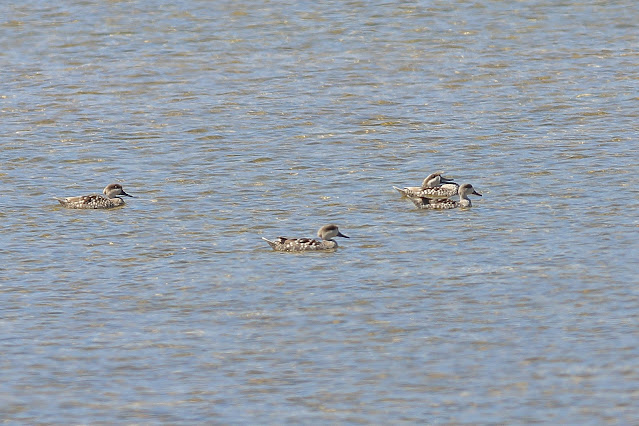

















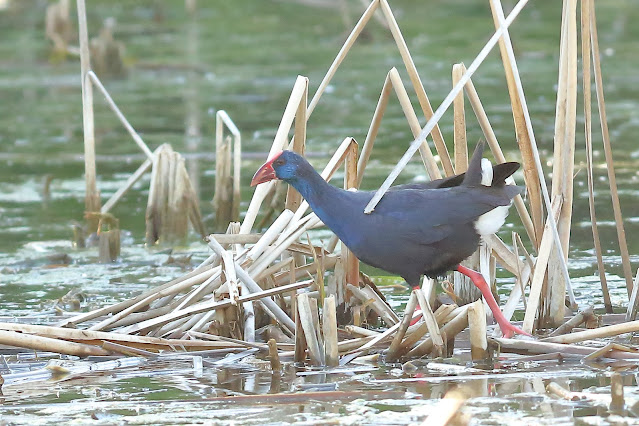


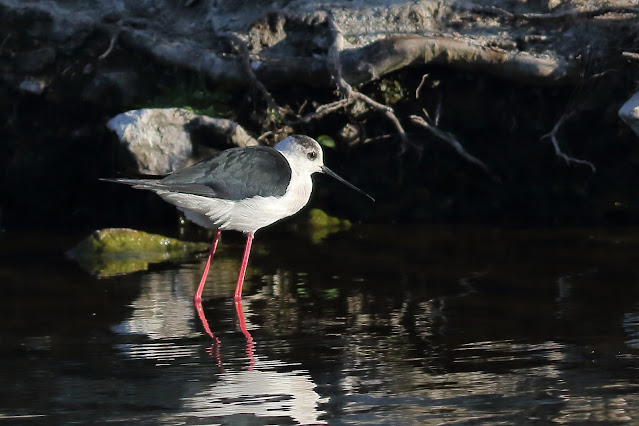












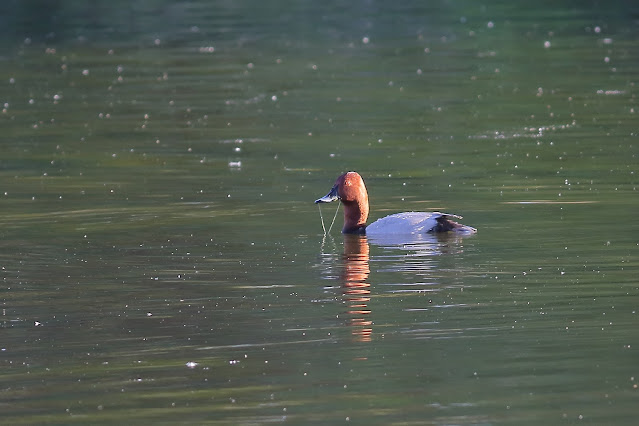









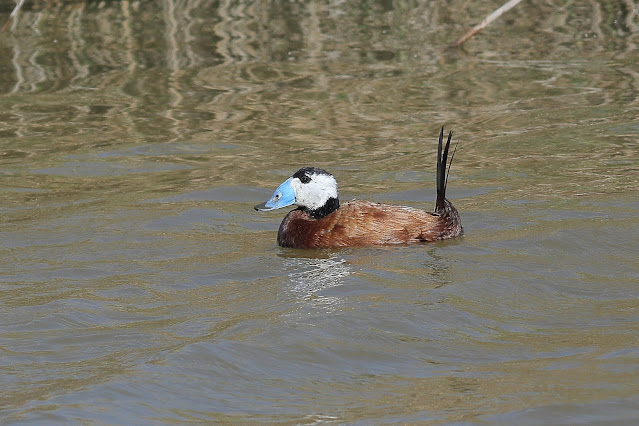































No hay comentarios:
Publicar un comentario